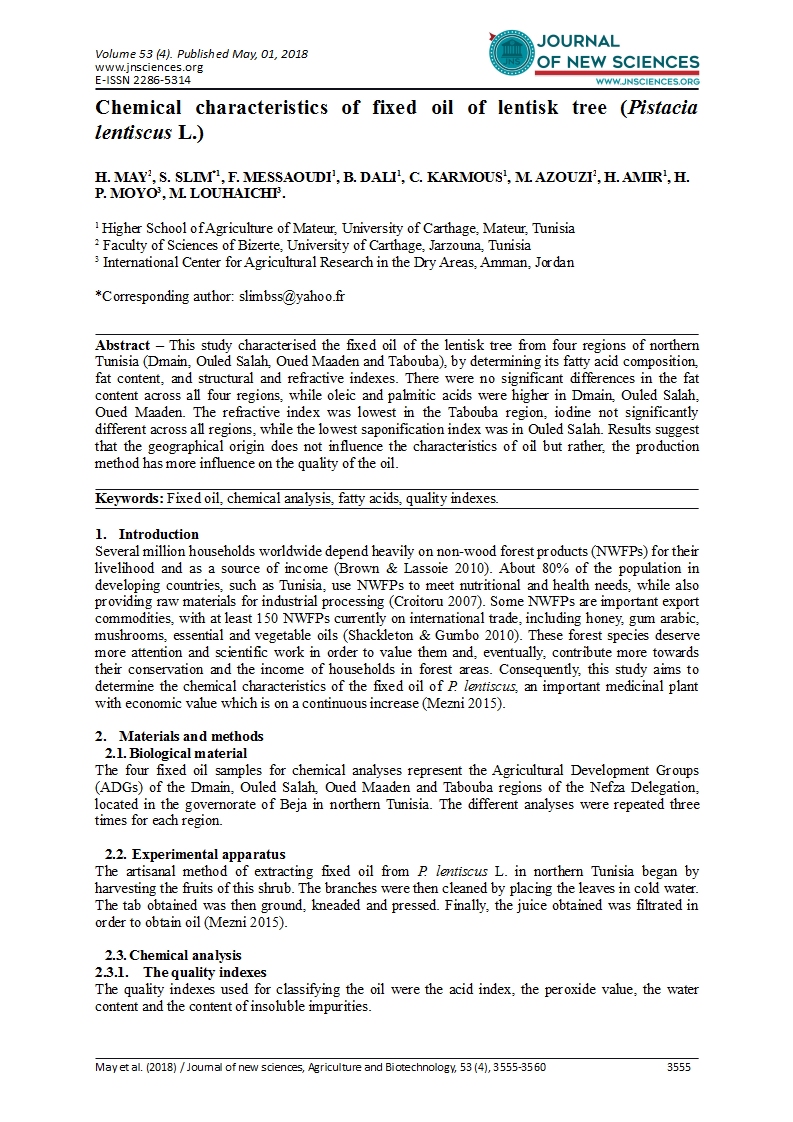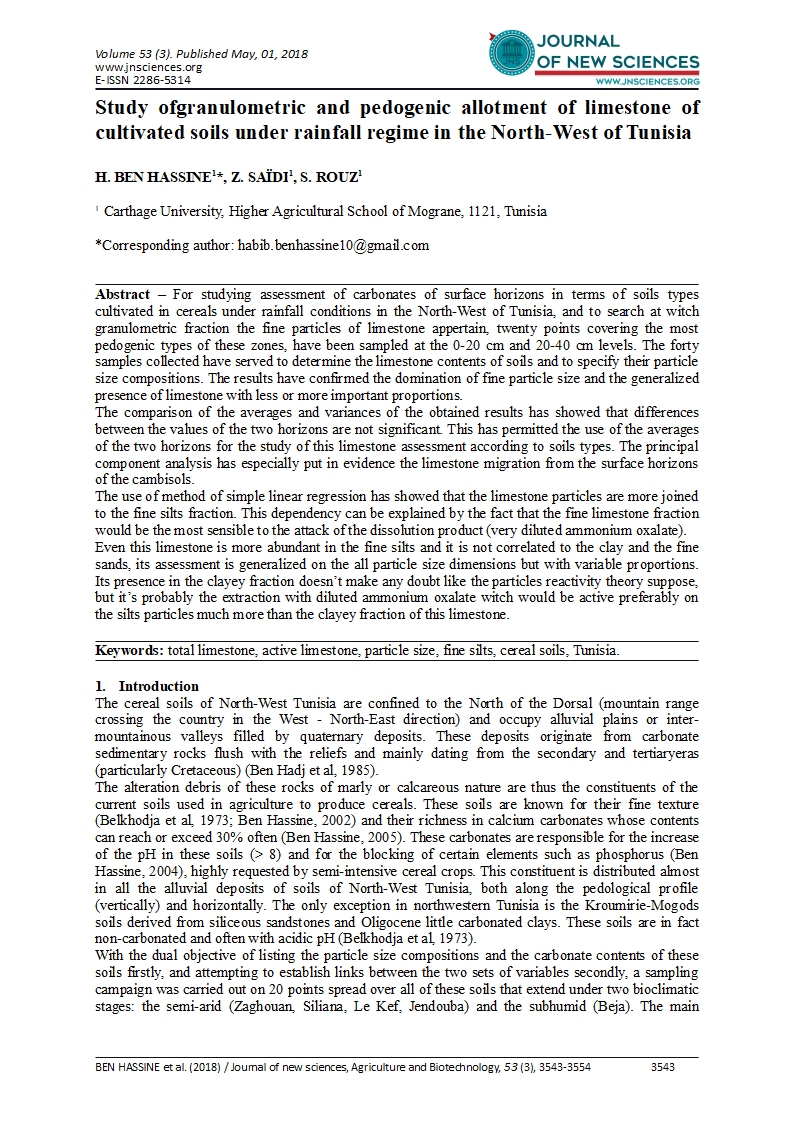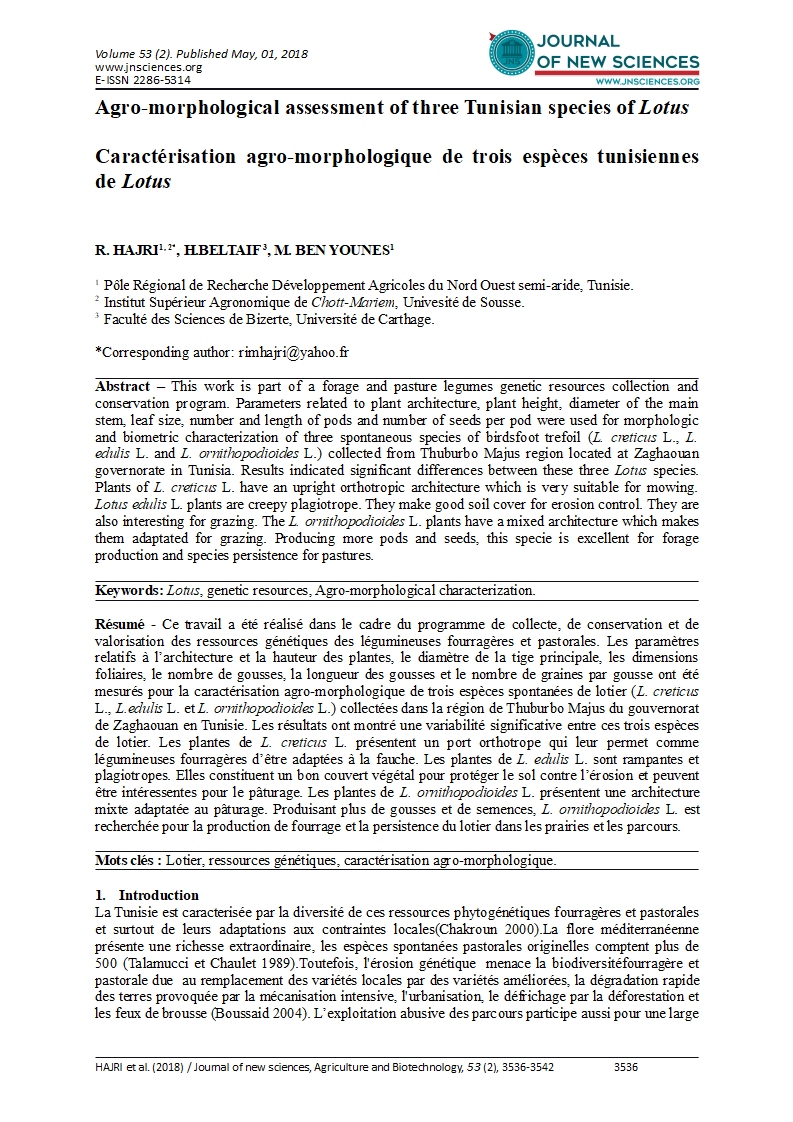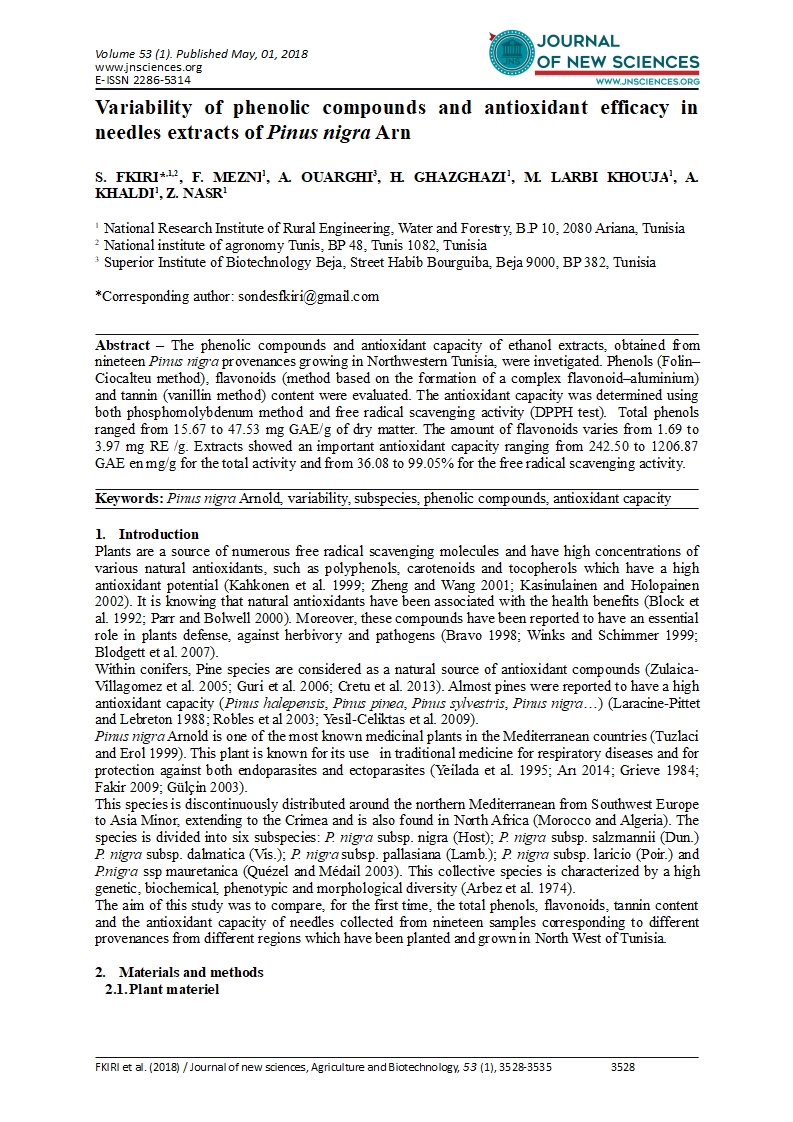- Category: Volume 53
- Hits: 5634
Chemical characteristics of fixed oil of lentisk tree (Pistacia lentiscus L.)

H. MAY2
S. SLIM*1
F. MESSAOUDI1
B. DALI1
C. KARMOUS1
M. AZOUZI2
H. AMIR1
H. P. MOYO3
M. LOUHAICHI3
1 Higher School of Agriculture of Mateur, University of Carthage, Mateur, Tunisia
2 Faculty of Sciences of Bizerte, University of Carthage, Jarzouna, Tunisia
3 International Center for Agricultural Research in the Dry Areas, Amman, Jordan
Abstract – This study characterised the fixed oil of the lentisk tree from four regions of northern Tunisia (Dmain, Ouled Salah, Oued Maaden and Tabouba), by determining its fatty acid composition, fat content, and structural and refractive indexes. There were no significant differences in the fat content across all four regions, while oleic and palmitic acids were higher in Dmain, Ouled Salah, Oued Maaden. The refractive index was lowest in the Tabouba region, iodine not significantly different across all regions, while the lowest saponification index was in Ouled Salah. Results suggest that the geographical origin does not influence the characteristics of oil but rather, the production method has more influence on the quality of the oil.
Keywords: Fixed oil, chemical analysis, fatty acids, quality indexes.



